You might have noticed that it wasn’t just Apple who launched brand new and potentially revolutionary hardware during the last week. AMD Radeon launched the RX 6800 XT and RX 6800, which are for the first time in many years, comparable to what NVIDIA is offering at the higher end in terms of performance and pricing.
At least, when it comes to gaming. As NVIDIA GeForce cards are meant for gaming too but perform brilliantly in creative applications, does that mean that creatives can finally pick up a card from someone other than NVIDIA? Let’s take a look at the AMD Radeon RX 6800 and RX 6800XT GPUs from a creators point of view.
AMD Radeon isn’t ready for prime time yet
You should know by now that I like to get straight to the point. With that said, no, except in a very few cases, you, as someone who uses creative applications, should not make the switch to AMD Radeon and stay with NVIDIA GeForce GPUs for the foreseeable future.
And no, that doesn’t mean I hate AMD. In fact, if I could build one I’d definitely choose an AMD CPU for my workstation. I also think it is great that AMD Radeon has stepped up their game. Competition is always a good thing. And for the first time in years, NVIDIA finally has a serious challenger. Even though there aren’t many benchmarks available yet, there are a few reasons as to why I don’t recommend the AMD Radeon RX 6800 or RX 6800 XT for creative applications at this moment in time.
AMD Radeon driver issues
If you like having a stable system because you’re doing important work and don’t want your computer to frequently crash, you will most likely not get on very well with the AMD Radeon drivers. They have been known to contain tons of bugs which means you will likely end up playing tech support more than you’re actually editing photos or videos.
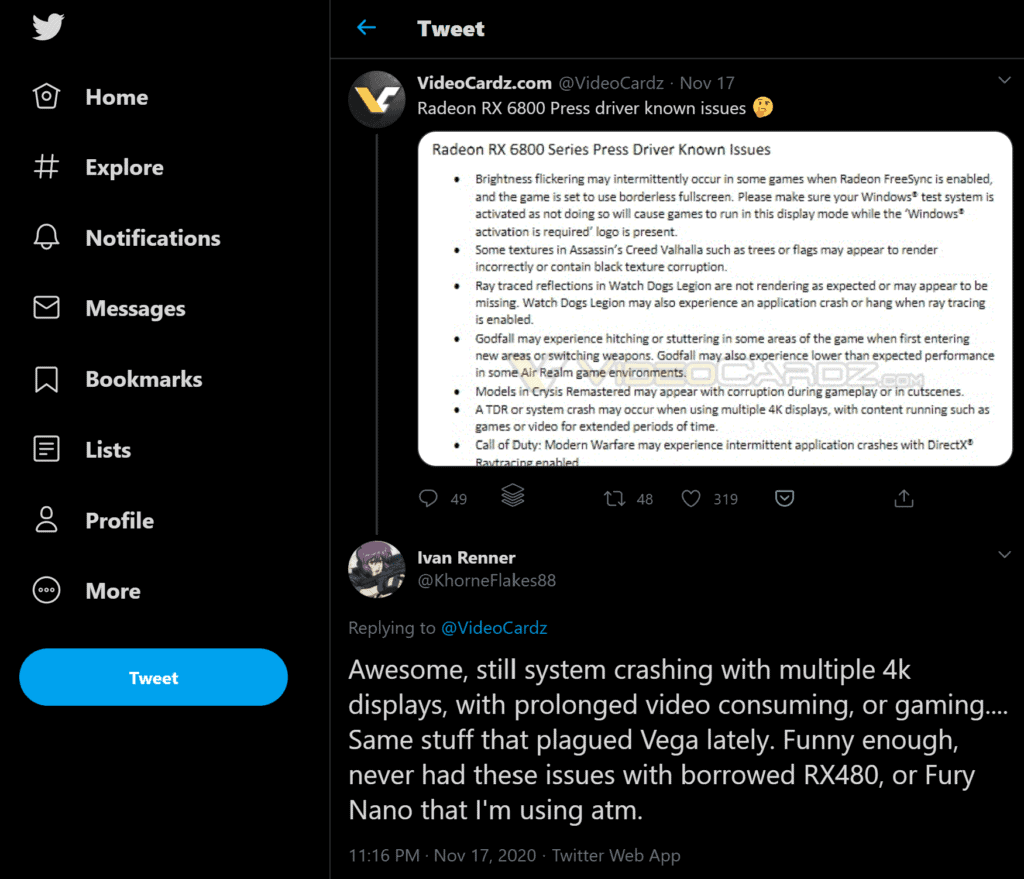
Just head over to the Radeon subreddit and will undoubtedly find someone complaining about drivers on the first or second page. If you’re a casual gamer you can possibly live with your system crashing now and again. But if you’re doing work you depend on and you haven’t saved it for some time, then a crash means longer hours, more frustration, and shoddier work stemming from your frustration.
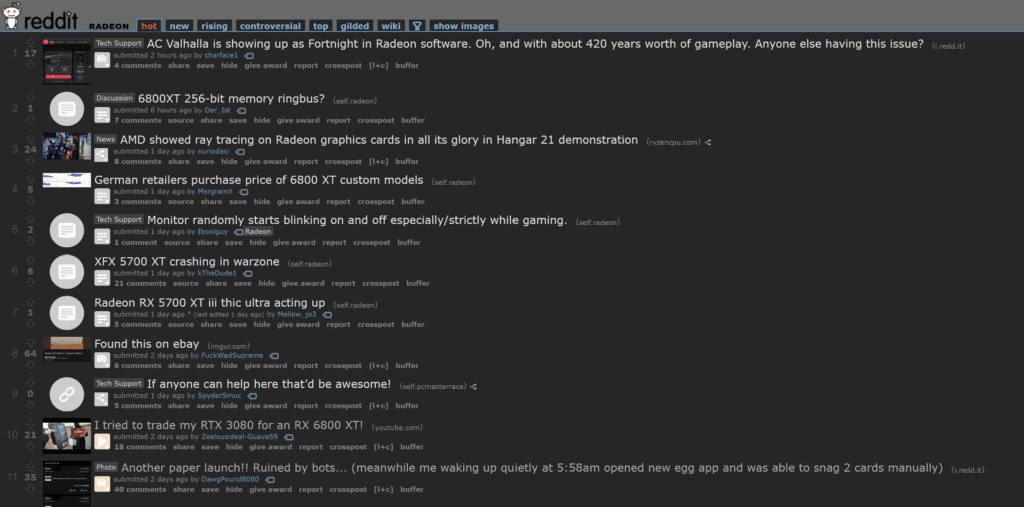
NVIDIA, on the other hand, offers Studio Drivers which are updated less frequently than their gaming-ready counterparts but are extensively tested in combination with creative applications such as the Creative Cloud suite and thus end up being more stable and containing fewer bugs. You might not get the best performance on the latest games but having your system run without any hiccups is much more important. I have experienced one single update which didn’t play nice with Premiere Pro in the four or so years I have owned my laptop. To fix it, all I had to do was roll back the update and wait for the next Studio Driver.
Hardware acceleration on the RX 6800 XT & RX 6800
Hardware acceleration is another area where, in most cases, AMD Radeon can’t yet compete with NVIDIA. I say most cases because the YouTuber Optimum Tech found that in DaVinci Resolve his RX 6800 XT was faster than the RTX 3090 at exporting and lagging only behind the RTX 3080 and 3090 when stabilising a clip.
His results are most likely at least partially down to the amount of RAM present on each card. The AMD Radeon RX 6800 and 6800 XT don’t have as fast RAM as the NVIDIA RTX 30 series but they do have quite a bit more. With 16 GB the RX 6800 XT has double the amount compared to an RTX3070. The RTX3080 “only” has 10 GB of RAM while the RTX3090 beats them all with 24 GB.
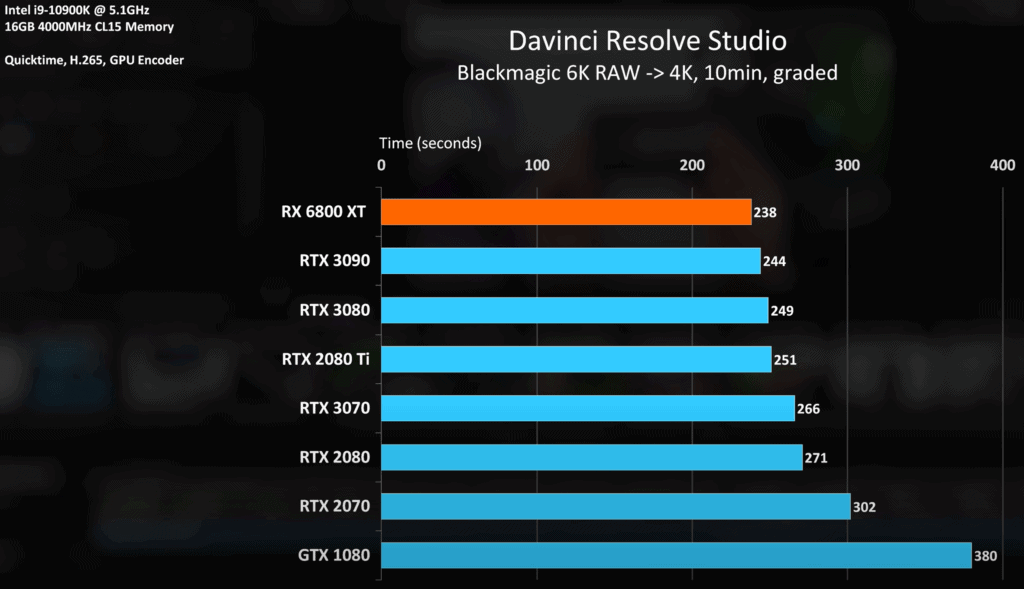
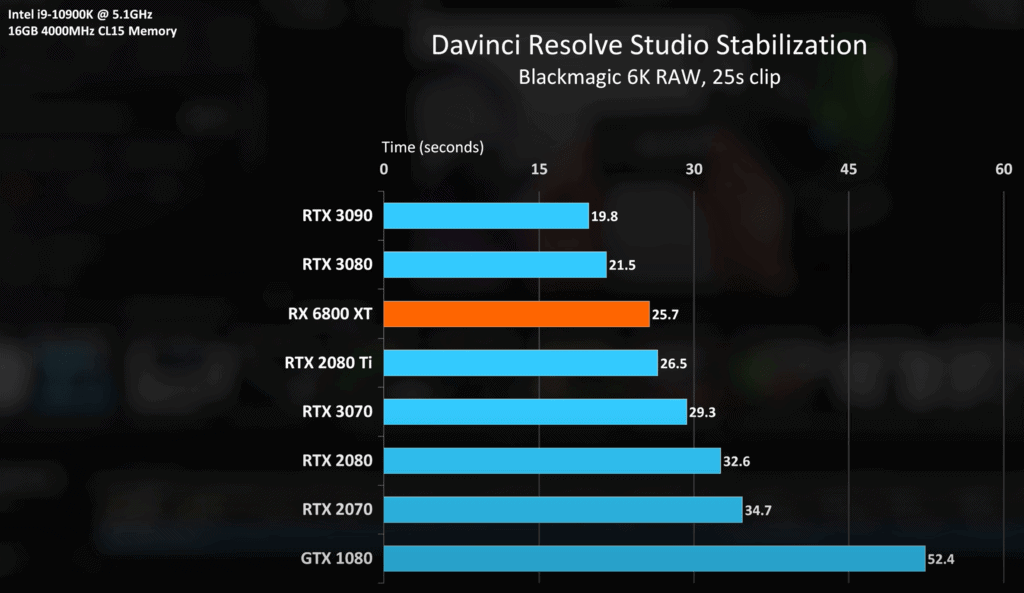
Back to why AMD Radeon probably won’t fare as well in many creative applications. NVIDIA has developed what they call CUDA, which is a parallel computing platform and programming model for general computing on GPUs and runs on so-called CUDA cores which are present on NVIDIA GPUs. Using CUDA, developers are able to dramatically speed up applications by harnessing the power of NVIDIA GPUs. Earlier this year we saw what a difference in performance GPU acceleration can make in Premiere Pro when Adobe finally enabled it.
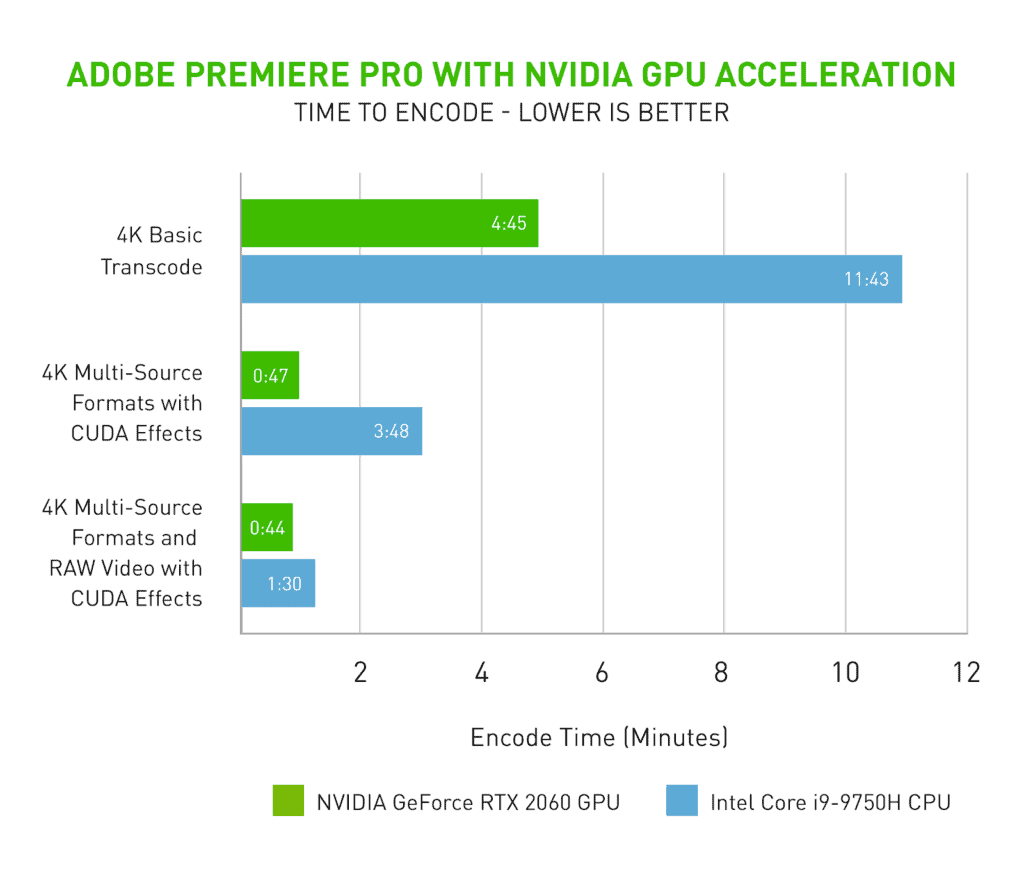
AMD Radeon cards obviously don’t support CUDA and don’t have any CUDA cores. What they do support is OpenCL. But because AMD Radeon GPUs have been lagging behind NVIDIA not just in terms of performance but also sales, developers have been working harder on implementing CUDA than they have been on implementing OpenCL. If you have limited resources would you work harder at making an application run better on let’s say 95% of user’s computers or 5%?
NVIDIA has also been pushing hard for applications to support CUDA. And because CUDA has been specifically developed for NVIDIA cards, the performance of CUDA is generally better than that of OpenCL. In fact, because NVIDIA also supports OpenCL there are comparisons between the two and CUDA is better in all cases. If you, like me, use Premiere Pro, which supports both CUDA and OpenCL, you should definitely go for an NVIDIA card as the performance using CUDA will generally be better compared to OpenCL.
For AMD Radeon to be able to compete they would have to provide developers with a serious competitor to CUDA. Just having the hardware for it and telling developers to go figure it out for themselves will not be enough. They would have to provide solid tools and extensive documentation to incentivise them. Support for developers is another area where NVIDIA currently have AMD Radeon beat and it’s another reason why CUDA is better implemented than OpenCL.
Video encoding on the RX 6800 XT & RX 6800
NVENC, which is what NVIDIA calls their video encoder, has been very much usable since the RTX 20 series. The RTX 30 series brought some minor changes but all in all, if you’ve got any RTX card the video encoder on it will be pretty decent and definitely good enough for exporting YouTube videos or streaming with OBS.
AMD Radeon’s video encoder on the other is just bad. Linus Tech Tips showed this in their review of the RX 6800 and 6800 XT. So if you’re planning on encoding videos with your GPU, it is after all much quicker than software encoding, don’t go with an AMD Radeon card.
Another area where it is very noticeable that NVIDIA’s software is much more mature is streaming. If you do any form of streaming or screen recording, which I personally do quite often, you will massively benefit from having an NVIDIA card. Besides being able to use hardware encoding without destroying the quality of your stream, the NVIDIA Broadcast app uses the Tensor cores found on RTX cards to enhance your audio and to add video effects like noise removal, virtual background, and auto frame.
Summary
To sum up why I don’t recommend the RX 6800 and 6800 XT for users of creative applications. a) The drivers aren’t stable enough and aren’t even in the same ballpark as NVIDIA’s. b) CUDA is more likely to give you better performance in video and photo editing applications. c) The AMD Radeon video encoder is pants compared to NVENC. d) And finally, AMD Radeon isn’t usable for streaming or screen recording.
That doesn’t mean I don’t appreciate these GPUs. Competition is always a good thing, and it will drive down prices and accelerate innovation. If AMD Radeon continues this trend and puts in some serious work into their software you could definitely be looking at one of their GPUs as a serious alternative to NVIDIA’s in a few years time.
Products mentioned in this article
RX 6800
Architecture: RDNA™ 2
Boost frequency: Up to 2105 MHz
Stream processors: 3840
Compute Units: 60
MSRP: $579
RX 6800 XT
Architecture: RDNA™ 2
Boost frequency: Up to 2250 MHz
Stream processors: 4608
Compute Units: 72
MSRP: $650
RTX 2060 Super
Architecture: Turing
Base core clock: 1470 MHz
Boost core clock: 1650 MHz
CUDA cores: 2176
Tensor FLOPS: 57.4 TFLOPS
MSRP: $399
RTX 2070 Super
Architecture: Turing
Base core clock: 1605 MHz
Boost core clock: 1770 MHz
CUDA cores: 2560
Tensor FLOPS: 72 TFLOPS
MSRP: $499
RTX 2080 Super
Architecture: Turing
Base core clock: 1515 MHz
Boost core clock: 1710 MHz
CUDA cores: 2944
Tensor FLOPS: 80.5 TFLOPS
MSRP: $699
RTX 3070
Architecture: Ampere
Base core clock: 1500 MHz
Boost core clock: 1730 MHz
CUDA cores: 5888
MSRP: $499
RTX 3080
Architecture: Ampere
Base core clock: 1440 MHz
Boost core clock: 1710 MHz
CUDA cores: 8704
MSRP: $699
RTX 3090
Architecture: Ampere
Base core clock: 1700 MHz
Boost core clock: 1700 MHz
CUDA cores: 10496
MSRP: $1499

